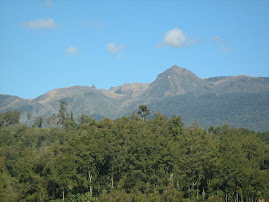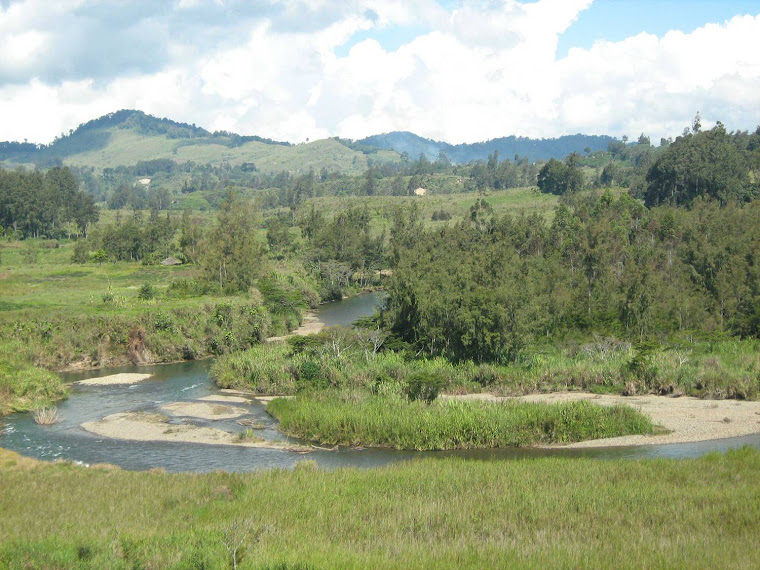By Mathew Yakai in China
PRIME Minister Sir Michael Somare’s trip to the Philippines that resulted in an agreement to engage a Philippine technical team to carry out feasibility studies on rice growing in PNG has received overwhelming objection.
Media reports the majority objection given that the scientific research on rice done in PNG is sufficient and the government should further fund the existing institution.
There are some questions need to be answered by the Prime Minister to clarify his latest move, undermining the Taiwanese expertise, Chinese expertise and Japanese expertise in growing rice
These expertises have once and for all rubbished Canberra’s rhetoric that PNG is unsuitable for growing rice.
Mr. Prime Minister, what are your bases for resorting to the Philippines for their expertise? What is lacking with the already foreign expertise that you try to acquire?
Why don’t you, Mr. Prime Minister, assign the K5 million towards the already existing rice research and growing projects in the country.
These questions are asked on the bases that the government has been and is always lacking wisdom when it comes to hiring the so called foreign expertise on a very luxury package when it suppose to make use of the already existing projects and find ways to improve.
There is no doubt that rice is already grown in PNG. Some families are slowly substituting the crop as their staple food. This is an improvement in PNG that must be utilized by the government if this country has to move forward.
Somare-Temu government is a boastful and hypocritical government of the day. On one hand, this government boasts that she realizes the importance of agriculture like what the Minister for Higher Education, Research, Science and Technology Michael Ogio said at the National Agricultural Research Institute’s innovation show and 12th Anniversary at Bubia in Lae, Morobe Province earlier this year.
Ogio states that the Somare-Temu government recognizes that agriculture is the only sector with a huge potential in improving economic growth.
But looking at rice, as the focus of this commentary, millions of Kina had been spent overseas to import rice when local farmers who are already growing rice can be assisted by the government.
Apele Goso in Nagamiufa village, near Goroka, Eastern Highlands Province is growing rice with his local people, but he needs a bigger mill to accommodate the growing production. Isn’t this good news for PNG?
Apele who received accolades from Jun Cao Technology of the Fujian Agriculture University of China for his high-quality rice production, says the K5 million could be better spent in helping existing rice growers who, at the moment, are struggling due to the lack of Government support.
This commentary agrees with Apele and adds that Somare-Temu government must support Apele and his villagers.
We have heard in the 50’s and 70’s that water-buffalo’s were ploughing the muddy terraces to plant rice.
But thanks to scientific break-through where the Chinese introduced Golden Mountain rice in Eastern Highlands, and smallholder farmers are cultivating and eating it.
There are many stories to tell when it comes to growing rice but this commentary would like to give an example of what is now done by Ramu NiCo Project in Madang.
Ramu NiCo Project is not only in the country to invest in the multi billion dollar nickel-cobalt project but also dispatching its scientists to teach people how to grow rice.
This commentary is not sure whether the action by Ramu NiCo is part of an agreement in the mining venture. If it is not then PNG should applaud this Chinese owned company.
They are bringing a huge change to the lives of the people living close to the mine site and PNG as a whole by contributing a huge potential in food security.
According to Ramu NiCo 2006 to 2008 Sustainability Report, Ramu NiCo Management (MCC) Ltd is working with the Tropical Crops Genetic Resources Institute of the Chinese Academy of Tropical Agriculture Science in Hainan Province, China.
A team of six Community Affairs officers interviewed local farmers, local officials and other experts and identified rice as an untapped crop suitable for local farmers.
Thus, in 2006, Ramu NiCo helped established three model rice farms and expanded to 12 in 2007 through the provision of training and free seeds.
Rice farming requires limited financial investment and manpower, according to Ramu NiCo Report, and as such, rice was identified as a possible means by which local farmers could earn a sustainable income while reducing the need for expensive imported rice.
Ramu NiCo helped offset the initial cost and purchased a rice milling machine for farmers in Kurumbukari. Finally processed rice is sold to the Ramu NiCo catering service or the local market.
Ramu NiCo supports agriculture development in the Project area through research, technical support, and financial assistance to farmers and by providing access to new markets.
Its’ rice program is an excellent example to illustrate. So isn’t it a good idea for Somare-Temu government to tap into this arrangement between Ramu NiCo and Tropical Agricultural Research Institute in Hainan, China, rather then spending the K5 million to a new engagement from the Philippines.
China has a population of 1.3 billion, the highest in the world and if she can be able to sustain her huge population through food security then the scientific innovation in terms of agriculture from china should be embraced.
China lived through 5000 years, gone through it, and now they are telling PNG for the mere 5.6 million people. This is unlike Australia, Britain and United States, who ruled and left without leaving anything behind.
If you love rice and know something about Chinese rice then the name, Yuan Longping would ring a bell. He is the father of “hybrid rice” in China, now comfortably feeds the 1.3 billion people.
“I saw rice plants as tall as Chinese sorghum,” said Yuan of a dream he once had, “each ears of rice as big as a broom and each grain of rice as huge as a peanut.”
“I could hide in the shadow of the rice crops with a friend.” Yuan was awarded a RMB 5 million State Supreme Science and Technology Prize for his high yield hybrid rice species. The award is viewed as “Chinese Nobel Prize”.
He came up with an idea for hybridizing rice in the 1960s, when a series of natural disasters and inappropriate policies had plunged China into an unprecedented famine that caused many deaths.
Since then, he has devoted himself to the research and development of a better rice breed.
In 1964, he happened to find a natural hybrid rice plant that had obvious advantages over others. Greatly encouraged, he began to study the elements of this particular type.
In 1973, in cooperation with others, he was able to cultivate a type of hybrid rice species which had great advantages. It yielded 20 percent more per unit than that of common ones.
His research made a breakthrough in seeding. He successfully developed a set of technologies for producing indica (long-grained non-glutinous) rice, putting China in the lead worldwide in rice production.
For this achievement, he was dubbed the “Father of Hybrid Rice.”
In 1979, his technique for hybrid rice was introduced into the United States, the first case of intellectual property rights transfer in the history of new China
At present, as much as 50 percent of China’s total rice fields grow Yuan Longping’s hybrid rice species, yield 60 percent of the rice production in China.
Due to Yuan’s hard work, China’s total rice output rose from 5.69 billion tons in 1950 to 19.47 billion tons in 2007. The annual yield is enough to feed 60 million people.
The “Super Rice” Yuan is now working on yields are 30 percent higher than those of common rice. A record yield of 17, 055 kilograms per hectare was registered in Yongsheng County in Yunnan Province in 1999.
The debates among scientists about whether quality or quantity should take priority are frequently heard.
In the under-developed world, the output increase is no doubt the primary concern, while people in developed countries prefer high-quality rice.
Yuan had been asked to switch his major concern from increasing output to improving quality and taste, a task easier to accomplish for him.
But Yuan was unswayed. He firmly believed, in developing countries, the output increase outweighs the urgency for a better taste, and that his foremost task was to increase the grain reserve in developing countries.
"First we must have enough food, then comes eating well," he said. What's more, he explained, high yield does not necessarily mean a low quality.
In the past, when the Chinese people were not sufficiently dressed and fed, they looked on high output as their only goal. So they used fertilizers and farm chemicals without limit. This surely led to quality degrading.
At present, China has established nine indicators to evaluate the quality of rice, some of which are positively correlated with the output, while others are not.
Last year, China planted over 3 million mu of hybrid rice, with an average yield of 650 kilograms per unit. The highest unit output has reached 1,139 kilograms.
Due to improvement in quality, six indicators of the rice have met the First-grade level, and the other three the Second-grade. Some people, after trying this rice, said, "It is tastier than the rice from Thailand."
With the help of Chinese scientists, the acreage of hybrid rice in Viet Nam and India increased to 200,000 hectares and 150,000 hectares respectively in 1999.
Sir Somare’s first state visit to China in 1976 was to establish bilateral relationship with Beijing and also tap into China’s agricultural know-how.
Before hanging his sulu and sandal in politics, Somare should bring in Yuan’s “hybrid rice” and ignore the Philippines.
China is ready to offer, not running shops and kai bars, but, scientific knowledge. Up to you now, Somare!
American movie include Fijians as cast and crew
7 years ago









3 comments:
Hope Somare take note of this before he leaves for Philippines and hides in there forever.
Very interesting article, Matt!
Bro yu givim gutpela skul tintin long gapman yah. Na harim na mekim samtin.
Sick and tired of importing rice.
This is my first time visit at here and i am really happy to read everthing at one place.
Have a look at my page :: best cellulite treatment
Post a Comment